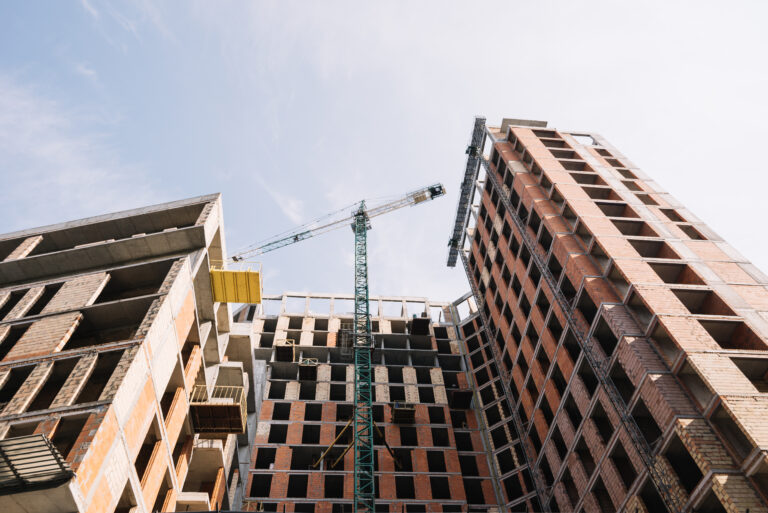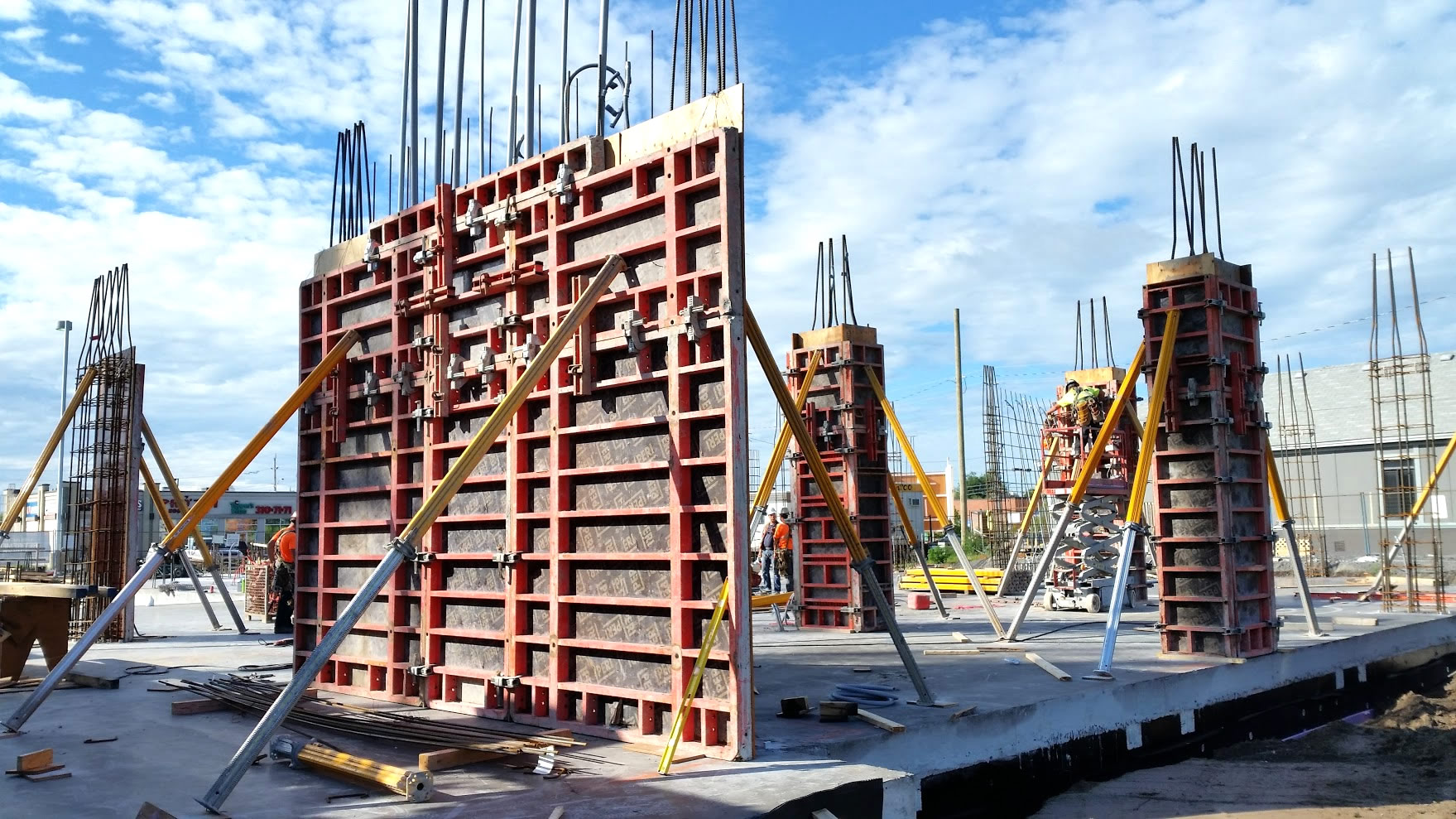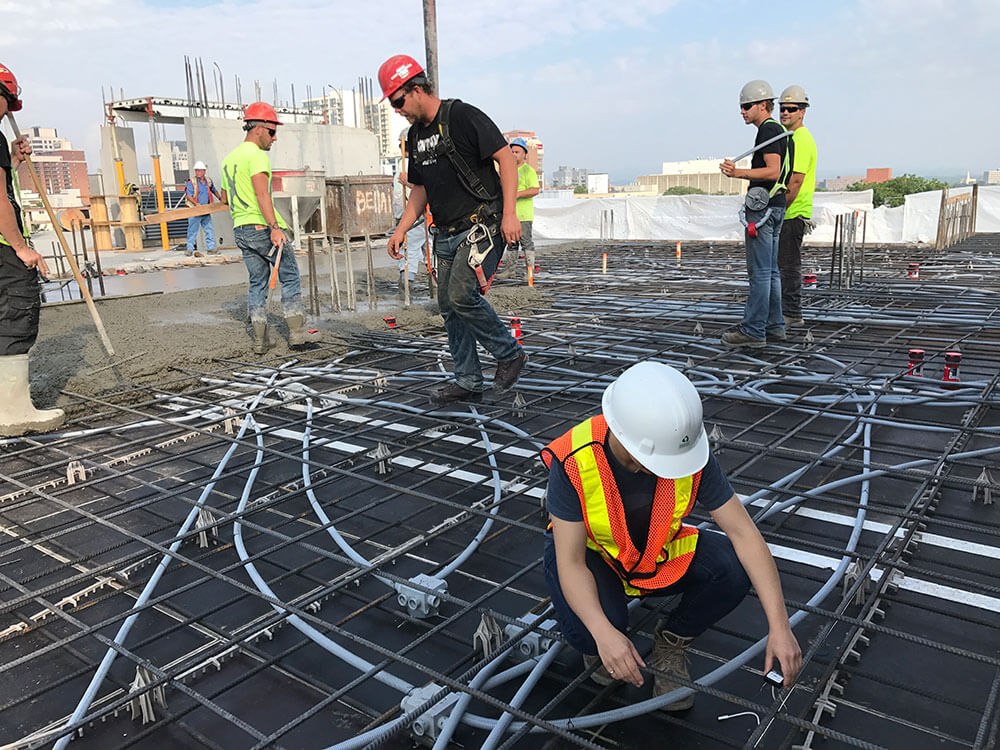A Jobsite Then and Now
Today’s construction sites look very different from those even a decade ago. While core machinery like cranes and mixers remains essential, they now operate alongside tablets, sensors, and automation technologies that bring new levels of control and insight.
Big Projects Deserve Better Protection
The industry is undergoing a significant shift. Traditional construction equipment is being enhanced with smart, connected tools, while new innovations like robotics and autonomous systems are redefining how projects are executed. In this blog, we’ll explore how both familiar and emerging equipment are changing how we build.
Smarter Tools, Same Foundations
Some equipment has been a staple on job sites for decades. But that doesn’t mean it’s standing still. In fact, today’s versions are smarter, safer, and more connected.
Below, we look at three types of machinery that have undergone major upgrades.
Tower Cranes: From Standalone Machines to Connected Systems
Once isolated machines controlled entirely from the operator’s cab, tower cranes have evolved into connected systems. These upgraded versions can now integrate with project data, increasing precision while keeping crews safer.
| Feature | Then | Now |
| Operation | Manual controls from cab | Remote or semi-autonomous operation |
| Feedback | Basic load information | Load sensors and anti-collision software |
| Presence | Operator onsite full-time | Remote station or offsite control |
| Integration | Independent of site systems | Linked to BIM and project planning tools |
Why this matters:
Upgraded cranes enhance safety, simplify planning, and cut delays. Integration with digital models allows for smarter decision-making both onsite and remotely.
Tower Cranes – Zoomlion 360° Intelligent Tower Crane Remote Control System
Zoomlion‘s intelligent remote-control tower crane system uses 360° cameras and immersive interfaces to allow operators to work from a dedicated control station rather than the cab. This boosts operator comfort, enhances visibility during critical lifts, and enables safer, more precise operations, all while keeping personnel off the structure at height.
Concrete Mixers & Batching
Traditionally, batching relied on experience and manual control. Today, it’s driven by data. From plant to jobsite, modern systems are improving mix accuracy, reducing waste, and ensuring quality before concrete even hits the forms.
| Feature | Then | Now |
| Batching Method | Manual batching, based on experience | Automated dosing and adjustments |
| Mix Adjustment | Trial-and-error mixes | Real-time sensor feedback and optimization |
| Quality Control | QC happens after pouring | QC happens during batching (e.g., Giatec SmartMix) |
Why this matters:
Consistency is everything when it comes to concrete. New systems let you get mixes right the first time and adjust on the fly. That means less waste, fewer rejected pours, and more predictable outcomes. It’s better for margins, the environment, and client trust.
Smart Batching & Mix Control – Giatec SmartMix™ & MixPilot™
Giatec SmartMix is an AI-powered mix management platform that helps concrete producers analyze mix designs for optimized performance, lower costs, and reduced waste. Pair it with MixPilot, their in-transit slump sensor that wirelessly monitors consistency from truck to pour, and you’ve got a full-stack, real-time mix-quality solution. The result? Instant quality feedback, fewer surprises on site, and streamlined concrete management.

Copyright of Giatec Scientific Inc.
Excavators & Loaders
Heavy equipment like excavators and loaders are seeing major upgrades. The result is greater fuel efficiency, more precision, and machines that can work longer with fewer human inputs.
| Feature | Then | Now |
| Power Source | Diesel only | Hybrid or electric with autonomous modes |
| Controls | Fully manual | GPS-guided, AI-assisted operation |
| Fuel Use | High consumption | Optimized for efficiency |
| Planning | Operator-directed | Integrated route mapping and task automation |
Why this matters:
Autonomous and hybrid models allow for longer runtimes, safer operations, and reduced fuel costs. These tools are especially useful in remote or high-risk environments.
Built Robotics Exosystem for Excavators & Dozers
Built Robotics offers an “Exosystem” sensor and software retrofit kit that turns standard excavators or dozers into fully autonomous machines. Equipped with GNSS, LiDAR, and safety sensors, the Exosystem works day and night, handling tasks like trenching or grading. Field results include stronger productivity and operator-led crews shifting to higher-value supervision roles.

Copyright of Built Robotics.
Big Projects Deserve Better Protection
Looking Ahead
While some machines are getting upgraded, others are showing up on jobsites for the very first time not as replacements, but as enhancements that solve persistent jobsite challenges, from labor shortages to tighter schedules.
Here are a few to keep an eye on:
| Equipment Type | What It Is | Key Benefits | Example Tool | Why It Matters in Construction |
| Robotic Rebar Installers | Autonomous robots that place and tie rebar | – Reduces repetitive manual labor – Operates in any weather – Improves site ergonomics and safety – Boosts productivity | TyBot by Advanced Construction Robotics – 1,200 ties/hour – ~99% accuracy – No BIM input required | Manual rebar tying is physically demanding and time-consuming. These systems reduce fatigue-related errors, increase accuracy, and save time on large projects. |
| Autonomous Construction Vehicles | Self-operating or remotely controlled haulers, dozers, and trenchers | – Works continuously—even without crews – Enhances safety in high-risk zones – Cuts downtime and labor costs – Retrofittable to existing equipment | SafeAI on Caterpillar 725 – GNSS, LiDAR, AI controls – 20% faster cycle time – 25% more cost-effective | Ideal for infrastructure and repetitive earthwork tasks, autonomous vehicles improve efficiency and reduce reliance on scarce skilled labor. |
| Construction Drones & Swarm Systems | AI-powered aerial systems for inspection, surveying, and material tracking | – Real-time site visibility – Autonomous or swarm flight – Thermal and visual inspections – Data syncs with BIM tools | Skydio X10 & DJI Enterprise Drones – Obstacle avoidance – Thermal & visual data – BIM/digital twin integration | Drones provide project managers with aerial insights, helping detect delays, verify work progress, and reduce rework. Useful for QA/QC and compliance. |
What It All Means
Beyond the technology itself, these changes have direct impacts on project timelines, labor use, and overall jobsite performance.
| What it impacts | What you gain |
| Labor availability | Less reliance on hard-to-find skilled workers |
| Project timelines | Fewer delays, more predictable scheduling |
| Cost management | Smarter resource use, less waste |
| Safety & compliance | Better documentation and lower incident rates |
| ESG goals | More sustainable operations, lower emissions |
| Competitive edge | You stay ahead of the curve not chasing it |
Want More on Cutting-Edge Construction Equipment?
The shift toward smarter equipment is part of a transformation in the construction industry. From planning to pouring, automation, robotics, and data-driven systems are creating safer, more efficient, and more sustainable jobsites.
3D Printing in Construction
One major example is 3D concrete printing, now moving beyond R&D into real-world construction. This technology is being used to build homes, bridges, and custom infrastructure faster and with less waste.
By combining:
- Advanced robotics
- AI-optimized concrete mix designs
- Real-time data from sensors like SmartRock
…construction teams can monitor quality as they print without slowing down production.
Interested in how 3D printing is being used today? Check out our blog!
Conclusion
As construction enters a new era shaped by automation, connectivity, and intelligence, equipment’s role is evolving from tools of labor to drivers of strategy. Forward-thinking companies are using this innovative construction equipment to reshape how they build. With better data and more automation built into each phase, they improve efficiency, tracking, and overall project delivery.






